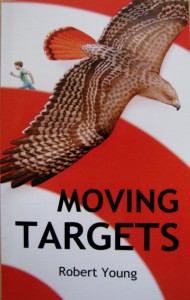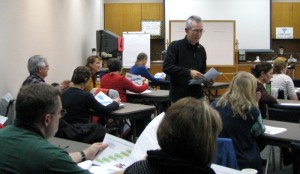Argument Writing
Common Core focus – “The ability to write logical arguments based on substantive claims, sound reasoning, and relevant evidence…with opinion writing—a basic form of argument—extending down into the earliest grades.” (Key Points in ELA, corestandards.org)
Argument is not the same as persuasive writing.
Key differences:
GOALS
Persuasive – convince the reader to agree with or do something the writer wants.
Argument – convince the reader to accept a viewpoint as valid and worthy of consideration.
STARTING POINTS
Persuasive – Select a topic and then choose a side.
Argument – Research a topic and then choose a side.
TECHNIQUES
Persuasive – Uses more emotion and opinion
Usually focused on one point of view (one side)
Argument – Uses more reasoning and evidence
Includes more than one point of view (multiple sides)
“…persuasive writing will not suffice. For college and career one needs to know how to make an effective case to make a good argument.”
George Hillocks, English Journal, July, 2010
Argument vs. Persuasive
A selected Bibliography
Argument (make-a-case writing)
Bouchard, David. If You’re Not from the Prairie… New York: Simon & Schuster, 1995. A celebration of place, using descriptive details. Claim: If you’re not from the prairie you don’t know the wind…the sky…the snow, etc.*
Carlson, Nancy. How to Lose All Your Friends. New York: Viking, 1994. Main character makes a claim – here’s how to lose all your friends – and lists the ways.
Jenkins, Martin. Chameleons Are Cool. Cambridge, MA: Candlewick, 1997. Author makes a credible case for chameleons.
McCaughrean, Geraldine. My Grandmother’s Clock. New York: Clarion, 2002. Grandma doesn’t need a clock, and makes a good case for it.
Morley, Jacqueline. You Wouldn’t Want to Be an American Pioneer. New York: Franklin Watts, 2002. Part of a series that makes a case for not living in various times of history.
Robinson, Sharon. Testing the Ice. New York: Scholastic, 2009. Makes a case for Jackie Robinson as “the bravest man alive” but not for the reasons you may think.
Sakai, Komako. Mad at Mommy. New York: Scholastic, 2000. A little rabbit makes a claim – “Mommy, I’m so mad at you!” – and gives reasons.
Sharmat, Majorie Weinman. Gila Monsters Meet You at the Airport. New York: Simon & Schuster, 1980. Humorous examples of claims not being supported by evidence.
Stevenson, James. Fun, No Fun. New York: Greenwillow, 1994. A basic book of opinions about what is fun and what is not fun.
Stringer, Lauren. Winter Is the Warmest Season. New York: Harcourt, 2006. A claim—winter is the warmest season—supported by reasons.
Turner, Sandy. Cool Cat, Hot Dog. New York: Atheneum, 2005. Who’s better, the cat or the dog? Both make a case.
Viorst, Judith. Alexander and the Terrible, Horrible, No Good, Very Bad Day. New York: Atheneum, 1972. Alexander makes a credible case for his “bad day claim.
Winter, Jonah and Carrihlo, Andre. You Never Heard Of Sandy Koufax?! New York: Schwartz & Wade, 2009. Makes the case for Sandy Koufax as “the greatest lefty who ever pitched in the game of baseball.”
Van Dusen, Chris. If I Built a Car. New York: Dutton, 2005. Jack makes a claim he could build a “spectacular car” and provides imaginative evidence.
Wisniewski, David. The Secret Knowledge of Grown-Ups. New York: HarperCollins, 1998. Also, The Second File, 2001. Creative, humorous, and convincing claims for typical everyday rules.
There are also series of books for upper elementary and middle school students that focus on controversies, issues, and mysteries:
BOTH SIDES (historic events). Minneapolis, MN: Dillon Press, 1994-1996.
BOTH SIDES OF THE STORY (social and political issues). New York: Rosen, 2012.
CONTROVERSY! (social and political issues). New York: Cavendish, 2010.
CRIME AND PUZZLEMENT (mysteries). Boston: David R. Godine, 1982-2003.
OPPOSING VIEWPOINTS (historical, social, and political issues). Farmington Hills, MI: Greenhaven, 1998-Present.
TWO-MINUTE MYSTERIES (mysteries). New York: Scholastic, 1959-1969.
VIEWPOINTS (social issues), New York: Watts, 1996-2004.
Persuasive (make-them-agree/do writing)
Aardema, Verna. Who’s in Rabbit’s House? New York: Dial, 1977. The Long One persuades animals to stay away form Rabbit’s house until he is tricked.
Child, Lauren. I Will Never Not Ever Eat a Tomato. Cambridge, MA: Candlewick Press, 2003. Charlie uses his imagination to persuade his little sister to eat hated foods.
Cronin, Doreen. Click, Clack, Moo. New York, Atheneum, 2000. Farmer Brown’s cows take to the typewriter and make demands to convince him to improve living conditions on the farm.
Daywalt, Drew. The Day the Crayons Quit. New York: Philomel, 2013. Duncan’s crayons are mad and write letters to tell him what they want.
Geisel, Theodore. Green Eggs and Ham. New York: Random House, 1960. A classic tale of persuasion.
Hoose, Philip. Hey, Little Ant. Berkeley, CA: Tricycle Press, 1998. An ant tries to convince a boy not to squish him, with a refreshing open-ended conclusion.
James, Simon. Dear Mr. Blueberry. New York: Simon & Schuster, 1991. A series of short letter between Emily and her teacher, Mr. Blueberry, in which he tries to convince her that she really doesn’t have a whale in her backyard pool.
Layne, Steven. My Brother Dan’s Delicious. Gretna, LA: Pelican, 2003. Joe tries to convince an imaginary monster to eat his brother, not him.
LaRochelle, David. The Best Pet of All. New York: Dutton, 2004. David wants a dog, and he gets one in a round-about way.
Lester, Helen. Tacky in Trouble. Boston: Houghton Mifflin, 1998. Tacky the penguin tries to convince an elephant that Tacky really is a penguin.
Orloff, Karen. I Wanna Iguana. New York: G.P. Putnam’s Sons, 2004. Alex uses persuasion to convince his mother to let him have an iguana.
Shannon, David. No, David! New York: Blue Sky Press, 1998. Good example of ineffective persuasion.
Teague, Mark. Dear Mrs. LaRue: Letters From Obedience School. New York: Scholastic, 2002. Ike, the dog, writes humorous and endearing letters from obedience school to convince his owner to let him come home.
Viorst, Judith. Earrings! New York: Atheneum, 1990. A young girl uses her best techniques to try to persuade her parents to let her get her ears pierced.
Willems, Mo. Don’t Let the Pigeon Stay Up Late. New York: Hyperion, 2006. A pigeon’s attempts to stay up late using a variety of persuasive techniques.
Other Resources
Achieve the Core – Common Core tools and resources. www.achievethecore.org
CommonCoreState Standards – The nitty-gritty on Common Core Standards. www.corestandards.org
Debate – Participate in debates on a variety of issues. www.debate.org
Hillocks, George. Teaching Argument Writing 6-12. Portsmouth, NH: Heinemann, 2011.
Historical Scene Investigation – Students act as “history detectives” to solve cases while using primary sources as evidence. http://web.wm.edu/hsi/index.html
LearnZillion – Teacher-created lessons that address Common Core standards. www.learnzillion.com
readwritethink – A variety of opinion/persuasion/argument lesson plans. http://www.readwritethink.org
Susan Ohanian – An opposing viewpoint of Common Core Standards. http://www.susanohanian.org
Writing Fix – And here’s more writing lessons. www.writingfix.com
Yong Zhao – Another Common Core voice. http://zhaolearning.com/




